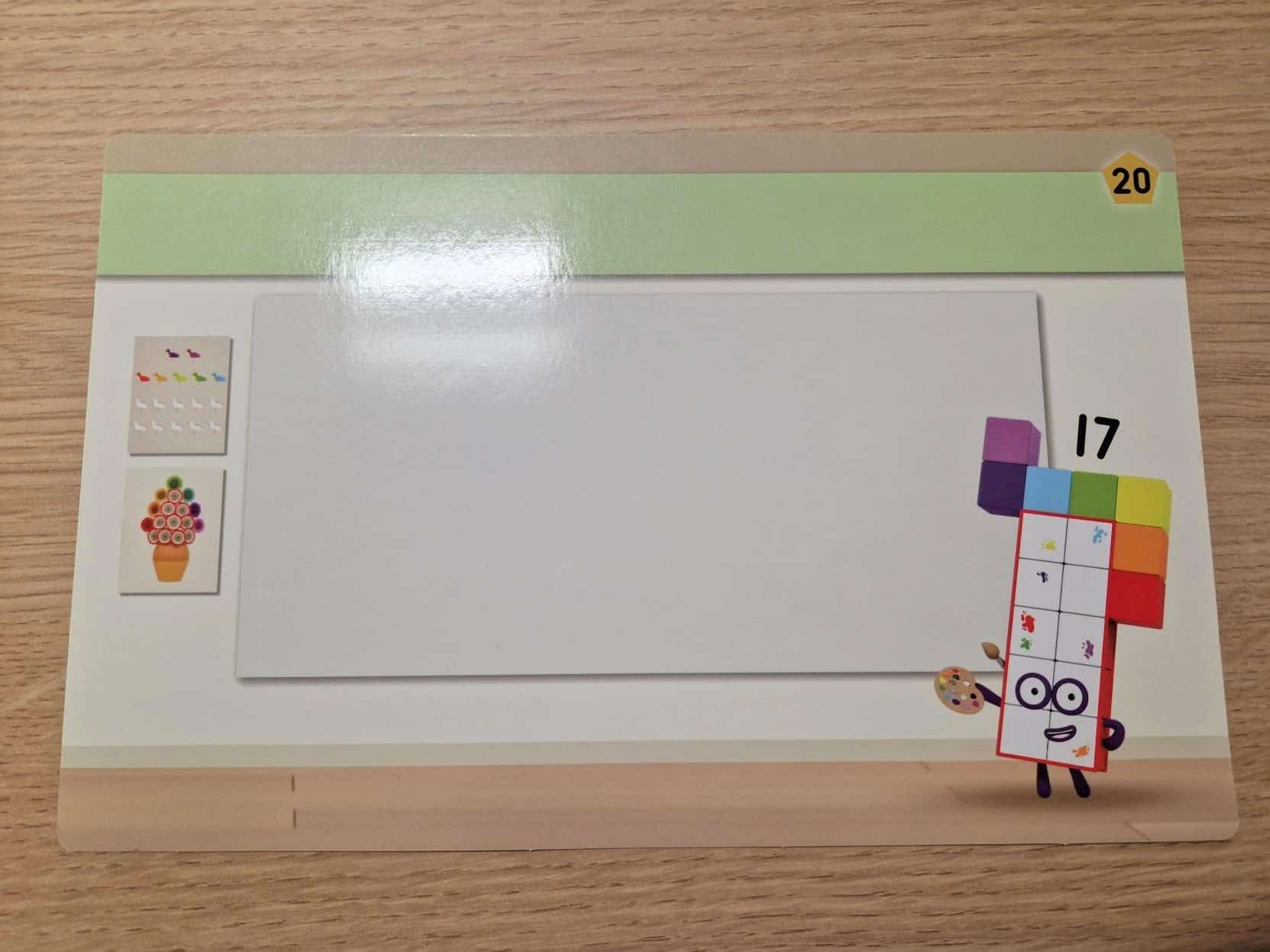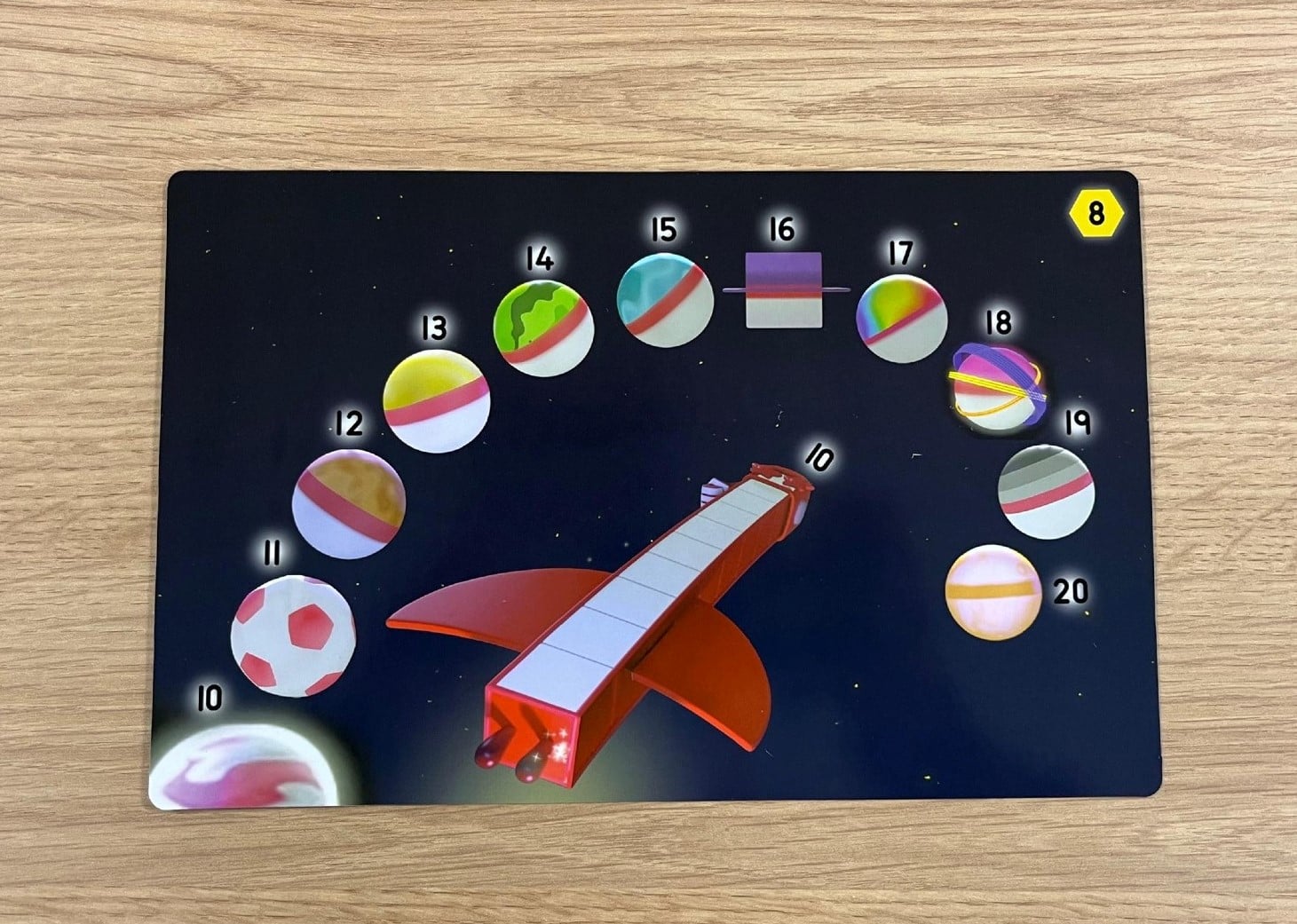Exciting ways to use Numberblocks in the classroom
Numberblocks are a great maths tool to use for younger children in KS1 primary to build a solid maths foundation, spark curiosity about the power of numbers and sums, and set them off on a lifetime of maths success. There are many exciting ways to use Numberblocks in the classroom, for children to learn maths in a fun and immersive way.
Here we explore some different ways to incorporate Numberblocks into your lessons, from making use of the activity cards in the pack to various Numberblocks games. Read our blog to discover our exciting ways to use Numberblocks.
Use the activity cards
The MathLink® Cubes Numberblocks 11-20 Activity Set from Learning Resources® comes with fun activity cards that are linked to selected CBeebies episodes from series 3 and 4. Along with the activity cards, the set also includes character cards to help deepen children’s understanding of each number’s properties. These also come with activities connected to each character so there are plenty of fun maths activities to be cracking on with. Using these cards is a great way to introduce Numberblocks in the classroom.
When building each character, children can look at some of the character activity cards and complete the activities. This will encourage them to learn maths through understanding numbers as well as build with blocks.

An example of the activities is ‘look at Seventeen’s works of art and count each object to make sure he got them right’.
The activity cards are all based on episodes from the TV programme. It is perfect to combine watching the specific episode, with completing the activity that goes with it. An example of an activity from one episode is creating a skatepark for Numberblock Fourteen using cubes and the activity cards. As this is based on the episode about Fourteen, why not play that episode whilst the children invent their crazy skateparks? They can even play with the character and set after building it!
Mix art and maths together
Another way to use Numberblocks in the classroom is through art. Let children express themselves by drawing a scene from the show or even just draw one of the characters. You could even task the children with sums using the blocks as they can then use them to help draw out characters. Get your pupils to stack the blocks together to count out loud and even involve them in their art pieces. Let them use all sorts of art supplies, such as paint, felt tips, crayons etc, to create their favourite scenes or characters. Or they can create their own scene cards that the blocks can go onto for role-playing once done.
Use to demonstrate to your class
Another way you can use Numberblocks is simply using them as a visual representation for your maths lessons. This is perfect when discussing sums and numbers to the whole class. You could display them at the front clearly and hold each character up when you get to that number.
To make it extra fun, you could create a story for each character to add blocks and remove them. This allows children to understand maths through what they are seeing.
Make number lines
One of the easiest and most exciting ways to use Numberblocks is to build the characters to make number lines. Doing this will not only create a visual representation of the real numbers for children, but also a physical representation that they can engage with by adding and removing blocks to create the right number line.
After the children create their characters, ask them to find the numeral card and another visual representation (maybe using more MathLink® cubes) to match. This will enable pupils to see the number in three different formats, to provide further understanding.

Have a Numberblocks race
One of the best Numberblocks games to play with your class is a character-building race. All you need are the blocks and a bag that can fit them all inside. Break all the blocks up and put them into the bag, shaking it to ensure they are all mixed up. Hand the bag around the classroom and instruct pupils to take a cube out of the bag. Repeat this until someone has built a character from the blocks. The first person to achieve this is the winner of the race.
The game will help young children to grasp the concept of how numbers work and how they are doing sums at the same time as playing a game!
Allow individual role-playing
Another way to teach numbers to pupils through using Numberblocks is to leave them out in an area for individual, child-initiated learning and play. Doing this allows children to learn how to build a character of a certain number by themselves. Plus, it gives them an opportunity to role-play with the characters.
They can make up stories or re-enact TV episodes using their creativity and imagination, whilst learning about numbers. It is vital to allow role-play for young children as they develop their creative side and socialise with others through play. These key areas have many benefits such as improving language skills, developing fine-motor skills and building awareness of the world around them.
Play Numberblocks online games
For some additional fun ways to learn maths, you could allow pupils to spend some time playing popular online games, videos and activities. There’s a host of videos to watch on the Numberblocks YouTube channel, fantastic printable activities to go alongside the episodes on the Numberblocks website. There’s a large selection of Numberblocks games available through the CBeebies website. Discover games such as jigsaw puzzles and the make and play online games where children can colour, make and play a game for each character.
Create a Numberblocks hunt
An engaging way for pupils to have fun with numbers is by creating a Numberblocks hunt. Hide the components of each of the Eleven to Twenty characters together in various locations around the classroom and even outside. Write a number down for everyone to see and let children pair up to find the blocks. Once found, they can build the character and keep it. The team with the most characters wins.
To challenge the children further, you could ask all teams to become Number Explorers and find other objects that either feature a number or can be grouped together in a number. For example, if a team has found Numberblock Fourteen and built him, challenge all teams to find something that there are 14 of. Or find 14 of the same item, or spot something displaying the number 14. These can be items that are found in the classroom such as pens. The team who gets the objects first gets an extra point, but everyone should be awarded the title ‘Number Explorer’!

Go on and give these exciting ways to use Numberblocks a try with your class, expanding their knowledge on vital maths and how numbers work. Children can get hands-on with the building, playing and learning maths through the characters. They can develop numerous skills that are important for younger children to grow whilst having fun. Also, Numberblocks games lets children expand their creativity and imagination which is key to development.
Want more vital teaching resources just like our Numberblocks? Discover Learning Resources’ range of high-quality educational toys, games and teaching resources here. Perfect for supporting teachers in creating immersive, curriculum-aligned learning experiences through hands-on play.
For more exciting maths activities, and an opportunity to get your pupils outdoors more, check out our ‘teaching maths outdoors’ blog now.